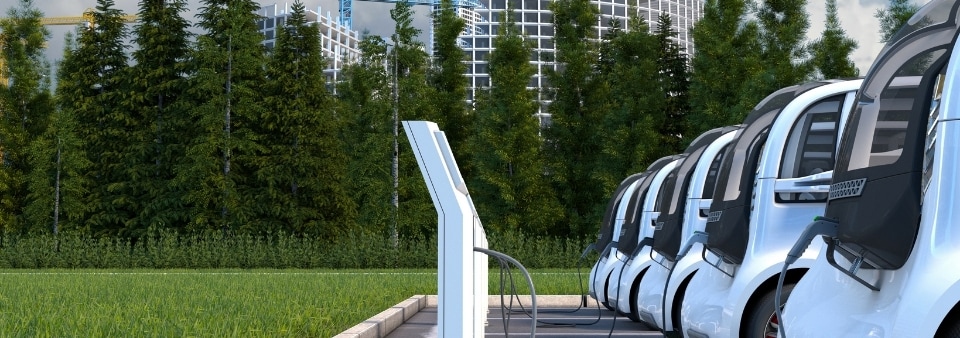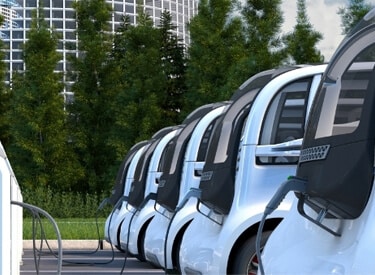The transport sector is one of the UK’s largest emitters of CO2 and a major source of air pollution in cities. While the path to solving these issues is far from certain, steps are being made to address this. The UK government has already announced a ban on the sale of new petrol and diesel cars and vans by 2030 and the end of new hybrid car and van sales from 2035. On 14 July 2021 the Transport Decarbonisation Plan was issued, with the aim of decarbonizing all modes of domestic transport by 2050. On that same day, policy-makers, industry experts and representatives from local transport authorities spoke at a BSI-led webinar on the practical challenges and work on the ground to ensure an infrastructure is in place for zero-emission road vehicles.
Drivers and enablers of decarbonization
The transport industry will drive decarbonization efforts through adopting zero-emission enabling technologies and, more importantly, in response to behavioural change and buyer demand. There are a number of enablers of this change:
- Further development of zero-emission vehicle technologies such as electric batteries, materials and sustainable fuels. This includes the improvement of technologies already on the market to boost performance and reduce cost.
- Sustainable manufacturing and supply chain processes are needed to mitigate against embodied carbon emissions over the lifetime of a vehicle and beyond, including end-of-life and second-hand use.
- Charging infrastructure must be reliable and accessible, with grid capacity able to cope with the huge increase in demand for renewable electricity required to meet decarbonization targets.
- Regulation and government policies, such as those outlined in the government’s Transport Decarbonisation Plan, are required to guide service providers, infrastructure owners and vehicle manufacturers and operators.
- Standards are crucial to enabling decarbonization; providing common good practice and language agreed by all relevant stakeholders, defining expectations that a product or system should meet, enabling testing and measuring outcomes. Standards are also vital for ensuring interoperability between devices such as EV chargepoints.
The safe, sustainable production of battery cells is an area in which standards are driving innovation, through BSI’s participation in the Faraday Battery Challenge and the introduction of PAS 7060 (Electric Vehicles. Safe and environmentally-conscious design and use of batteries), PAS 7061 (Batteries for vehicle propulsion electrification. Safe and environmentally-conscious handling of battery packs and modules) and PAS 7062 (Electric vehicle battery cells. Health and safety, environmental and quality management considerations in cell manufacturing and finished cell).
In the day-to-day practicalities of owning EVs, standards will be vital in ensuring a reliable and satisfying user-experience, addressing the built environment at charging stations, including parking bay size, charge-station height and cable weight. The recently published PAS 1878 and PAS 1879 support wider system functionality and architecture to enable a “smart” chargepoint infrastructure, as part of the BEIS and OZEV funded Energy Smart Appliances Programme. This will ensure that chargepoints can provide flexible services whilst supporting key policy principles of interoperability, data privacy, cyber-security and grid stability.
Perceived barriers to decarbonization
For the majority of transport users, electric cars are the most obvious example of zero-tailpipe-emissions transport. And among consumers, the greatest cause of hesitancy around the adoption of EVs is so-called range-anxiety. Better charging infrastructure and improvements in range will help prove the viability of EVs in the eyes of consumers. However, behavioural change may be even more important.
Drivers are used to infrequently fully-refuelling their cars at petrol stations and expect long range from their vehicle between fuelling stops. Part of the solution to range anxiety will come from a change in mindset away from this ‘petrol station model.’ The introduction of charging stations at locations such as supermarket car parks will allow EV users to fit charging around their daily routine, avoiding making additional journeys just for the purpose of recharging. The placement of different types of chargers can also drive behavioural change. For instance, while it is possible to install rapid-charging infrastructure on high-traffic routes, this may not be desirable as it could reinforce habits learned from the petrol station model of car use, leading to drivers making otherwise unnecessary journeys to charge their cars.
Many EV users will be able to charge their vehicles at home and start each day with a fully charged car with a range in the region of 200 miles. During at-home charging, smart chargepoint infrastructure will help in minimising charging cost and making use of electricity from renewable sources by drawing power from the grid at the optimal time of day.
The price point is another potential barrier to market update, along with uncertainty around the long-term future of EVs versus hydrogen. The creation of a local, sustainable supply chain and production capability for battery technologies along with electric motors and drivers (PEMD), supported by standards, can help with supporting a reduction in cost.
Heavy goods transport; a challenge for decarbonization
Heavy goods vehicles (HGVs) are an important part of our transport system moving our goods and services but are responsible for 16% of UK domestic transport greenhouse gas emissions. To meet the UK’s decarbonization goals, these emissions need to be reduced to zero by 2050. But this is even harder to decarbonize then domestic transport.
Battery technologies that are well-suited to electric cars are not necessarily well-suited to use in HGVs due to vehicle downtime during charging and the weight of batteries required to power large vehicles over long distances. Industry research suggests that there is enthusiasm for hydrogen fuel cell technology as a potential solution to decarbonizing HGVs. Benefits include short refuelling times and well-established technology. And, although large-scale investment in infrastructure will be required, the HGV use-case allows for refuelling infrastructure to be focussed around transport hubs.
Another possible option is electric road systems, with HGVs connecting to overhead electric lines via pantographs. Such a system uses existing technology and benefits from minimal equipment weight on-board the vehicle. Trials are already taking place in Europe.
Successful decarbonization of HGV transport by 2050 will require scaling-up of infrastructure and vehicle numbers by 2040 , when sales of fossil fuel HGVs are due to be banned.





